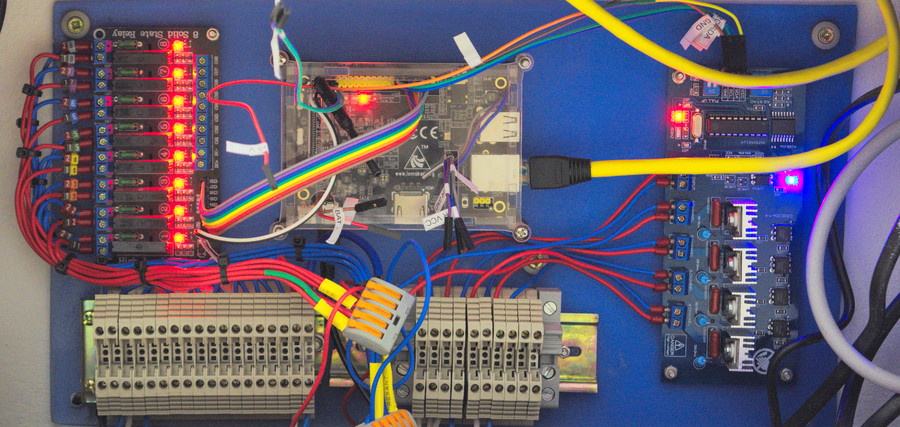Answer the question
In order to leave comments, you need to log in
Are there "smart" pass/cross switches?
It is possible to design the lighting of the future home from scratch. Gradually I come to the conclusion that I want to make lighting control combined: ordinary switches + the ability to control from some kind of controller a la "smart home" (UD). The ideal solution seems to be the wiring of a combination of through and cross switches, one of which could be controlled by the UD. Then, in case of any problems with the availability of the UD functionality, the manual control of the light remains fully operational.
However, he failed to google ready-made solutions. Maybe someone knows about this and can tell you where to look?
Answer the question
In order to leave comments, you need to log in
Use impulse relays, which in turn concentrate in one shield. In this case, you can make any scripts or change them without rewiring
I used solid state relays (pictured on the left), and duplicated them in parallel (along the control channel) with ordinary switches.
The dimmer (in the photo on the right) works according to the I2C protocol, it is not so easy to bypass it (if we want to keep the functionality).

Controls all this Banana Pro (via GPIO) with a self-written frontend on React'e
Now I would use pulse relays instead of solid state relays (as golovopatolog already advised )
Expensive. It is cheaper to have a second UD controller than to fence redundancy and splice it with the controller.
I see 2 directions.
1) What is the problem? Put in parallel, a mechanical switch and "Smart". For example, https://aliexpress.ru/item/32947300277.html?spm=a2...
Cons:
a) If you control from a cell phone, perhaps the "Chinese" will know the WiFi password.
b) The relay has been operating for less than a year and I don’t know how long it will last.
2) I don't like it, but how will the solution go. Switch lighting to 12-36 V.
Pros:
a) Can be connected to a solar-powered system. Actual where there are problems with 220 V.
b) Switching - diodes can also be used.
Cons:
a) If there is direct current, then the losses must already be taken into account.
b) I'm tired of changing power supplies))). There is lighting in the hallway, every 3 years I change the power supply.
And most importantly: The first word in the answer is Armenian Radio ))). You can quickly buy a power supply or a wireless relay for 2000-3000 rubles. And why do I need such an expensive smart home? )))
Didn't find what you were looking for?
Ask your questionAsk a Question
731 491 924 answers to any question